The effects of Global Warming on agriculture are immense.
Global Warming and Agriculture and interrelated processes, both of which take place on a global scale, affecting agriculture directly and indirectly.
This takes place through changes in precipitation, changes in temperature, and climate extremes, changes in pests and diseases, atmospheric carbon dioxide, etc.
Moreover, global warming affects agriculture that is unevenly distributed across the globe.
Global Warming, in general, refers to the recent and ongoing rise in the global average temperate near the surface of the Earth.
One of the major reasons is the increase in greenhouse gas emissions in the atmosphere.
Moreover, Global Warming is causing climatic patterns to change resulting in long-term changes in Earth’s climate.
Let us first discuss Global Warming
Global Warming and Its Effects
Global Warming is the unusual and rapid increase in the temperature of the Earth. It is mainly due to the greenhouse gas emissions as people burn fossil fuels.
The average global temperature rose 0.6 to 0.o degree Celsius between 1906 and 2005, however, this rate of temperature has nearly doubled in the last 50 years.
Let us discuss the effects of Global Warming
Average Global Temperature
It takes a massive amount of heat energy to increase the average global temperature, even a slight amount of it.
However, a 2-degree Celsius temperature might seem small, since the pre-industrial era, but it means a significance in Earth’s Climate.
This extra heat is not only resulting in the increase in average global temperature but also reducing snow covers, melting ice sheets, intensifying precipitation.
Moreover, changing habitat rages for not only animals but also plants.
Though warming has not been uniform across the planet, the upward trend in the globally averaged temperature shows that more areas are warming than cooling.
According to NOAA’s 2020 Annual Climate Report, the combined land and ocean temperature has increased at an average rate of 0.13 degrees Fahrenheit ( 0.08 degrees Celsius) per decade since 1880.
However, the average rate of increase since 1981 (0.18°C / 0.32°F) has been more than twice that rate.
Earth’s Natural Greenhouse Effect
The temperature of the earth begins to increase due to light coming from the sun in the form of solar radiation.
However, nearly 30 percent of this incoming solar radiation reflects due to bright surfaces like clouds and ice.
The ocean and the sea absorb the remaining 70 percent of the solar radiation while the rest is absorbed by the atmosphere.
This Energy that the atmosphere absorbs heats our planet.
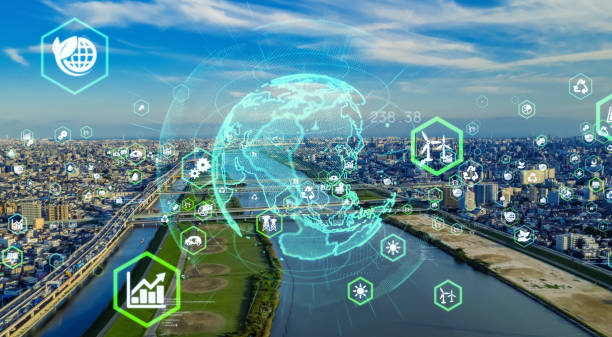
As the rocks, sea, and air warm, radiates heat energy.
This solar radiation energy travels into the atmosphere where water vapors and greenhouse gas emissions absorb it, such as carbon dioxide and methane.
However, when they absorb energy, water or greenhouse gas molecules turn into heaters and they radiate in all directions.
The energy that radiates back towards Earth heats both the lower atmosphere and the surface, thereby enhancing the heating they get from sunlight.
These greenhouse gas emissions are although beneficial for the Earth.
However, it if increases in a drastic way, it causes changes in the land and water for the long term.
Human Activity
Since the Industrial Revolution, human activity has changed the Earth’s natural greenhouse gas emissions.
The burning of fossil fuel and oil has increased the concentration of atmospheric carbon dioxide which increases the average global temperature.
These effects are visible as
- Warmer climatic conditions changing the Earth’s climate for the long term.
- It leads to more precipitation and evaporation
- Stronger greenhouse effects will melt the glaciers and ice sheets thereby increasing the sea levels.
- Climatic extremes like drought and floods can affect the yield of crops and lead to food scarcity.
Many climate scientists agree that significant societal, economic impact.
As well as ecological damage would result if global average temperatures rose by more than 2 °C (3.6 °F) in such a short time.
Such damage would include increased extinction of many plant and animal species, shifts in patterns of agriculture, and rising sea levels.

In 2014 the IPCC reported that concentrations of carbon dioxide, methane, and nitrous oxides in the atmosphere surpassed those found in ice cores dating back 800,000 years.
Ice melt and Increase in Sea Level
With increasing global temperature, there is a significant amount of melting in glaciers and ice sheets in the poles that are resulting in rising sea levels.
The combination of seawater’s thermal expansion is associated with this warming and the melting of mountain glaciers.
It is predicted to lead to an increase in global sea level of 0.45–0.82 meters (1.4–2.7 feet) by 2100 under the RCP 8.5 emissions scenario.
However, the actual rise in sea level could be considerably greater than this.
This will also cause the ice sheets to melt at accelerated rates.
Such an increase in sea level would result in submerging of a substantial number of islands and lowland regions due to melting ice.
It would affect many countries that are near the coasts like North Merica, Bangladesh, Netherlands, Belgium, etc.
Many of the world’s major cities—such as Tokyo, New York, Mumbai, that are located in lowland regions are vulnerable to rising sea levels.
Learn more about Land Pollution here.
Increasing Greenhouse Effect
Over the past 250 years, humans are artificially rating the concentration of greenhouse gas emissions in the atmosphere at a very increasing rate.
Mostly by burning fossil fuels from cutting down trees and forests.
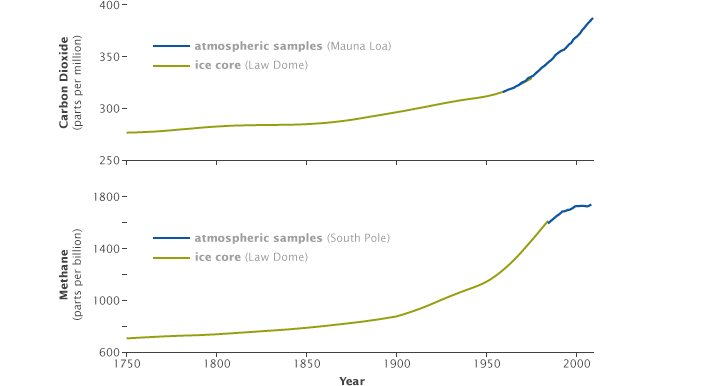
Moreover, with the industrial revolution in 1750.
The carbon levels have increased nearly by 38 percent as of 2009 and methane level by 48 percent
The atmosphere today contains more greenhouse gas emissions molecules.
Therefore, the energy absorption by the surface gets trapped in the atmosphere resulting in an increase in temperature.
Global Warming and Agriculture
Yes! Agriculture provides us with food that we eat every day but Global Warming is affecting Agriculture in many ways.
There is an impact on both sustainable and industrial agriculture.
Despite the certain range of temperature, warming reduces the yield of crops because crops speed through their development, producing less gain in the process.
Moreover, higher temperatures also affect the ability of plants to get and use moisture for the atmosphere.
The evaporation from the soil also accelerates when the temperature rises and plants increase transpiration, therefore, there is less moisture in the leaves.
A study by climate scientists in 2001 suggests that with rising temperatures, the poorest countries will be the ones to face an impact due to such changes.
Their agricultural yield and tropical and sub-tropical regions will face water scarcity as well.
Moreover in Africa and Latin and North America, many rainfed crops are near their maximum temperature tolerance.
Therefore their yield is likely to fall sharply even with slight changes in climate.
As a result, the Marine life and fishing industry will also take a hit and will be severely affected.
Another report in 2019 by International Panel on Climate Changes says that the world might reach a threshold of Global Warming beyond which the current practices of agriculture will be not able to support human civilizations.
Moreover, according to this study almost millions of people suffer from food scarcity due to climatic changes
It also predicts a decline in global crop production of 2% to 6% in a decade.
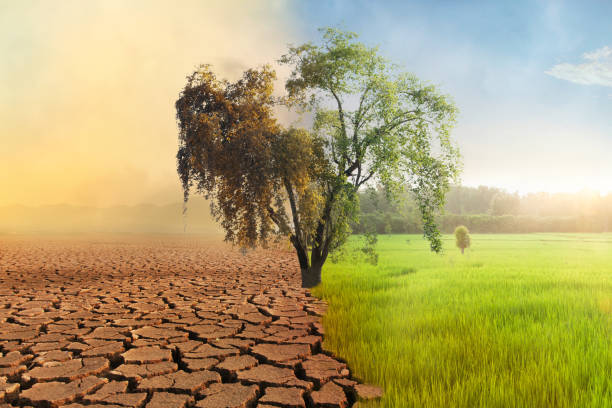
Long-Term Effects of Global Warming
In the long run, Global Warming will affect agriculture in several ways:
- Productivity: In terms of quality and quantity of crops
- Agricultural practices: Through changes of water usage, i.e. irrigations and agricultural inputs like herbicides, insecticides, and fertilizers.
- Environmental effects: Intensity of soil drainage, soil erosion, education in a diversity of crops.
- Rural Space: Loss of land for cultivation, speculation, and hydraulic amenities
- Adaptation: Pests and insects may become less or more adaptive to changing environment
Most climate scientists believe that the severity and the pace of climatic change will affect agricultural production.
If the change is gradual, there may be enough time to bring changes and adjustments however, rapid climate changes it is harming agriculture in many countries.
Especially those with poor soil and climatic conditions.
Learn more about Plastic Waste in Household Items here.
Pest Insects and Yield of Crops
Global Warming leads to an increase in pest insect populations, therefore harming the yield of the crops like wheat, soybeans, and corn.
While warmer temperatures lead to longer growing seasons and an increase in the growth rate, it is also increasing the metabolic rate.
And the number of breeding cycles of pests thereby causing a population boom.
Moreover, the insects that only had two breeding cycles a year, now have an additional cycle due to warmer temperatures.
As a result, temperate places and higher latitudes experience dramatic changes in insect populations.
A study in 2017 shows that with an increase in CO2 levels and warmer temperatures, although there was a rise in the production of soybeans.
However, it attracted more Japanese Bettles
Due to the rise in the CO2 levels, they also laid more eggs in the plants and had longer lifespans.
Early Blooms
As a result of Global Warming, flowering times of different plants have become earlier and such early blooms threaten the plant’s survival and reproduction.
This increases the risk of frost damage in some plant species and leads to mismatches between plant flowering and pollinators’ interaction.
About 70% of the world’s crop productions depend on insect pollination and contribute to the global economy.
In addition to warmer temperatures, it may trigger plants to bloom in winter as they need stimulation to flower
Effect on Growth Period
The duration of the growth of crops depends on the temperature. An increase in temperature will increase the development.
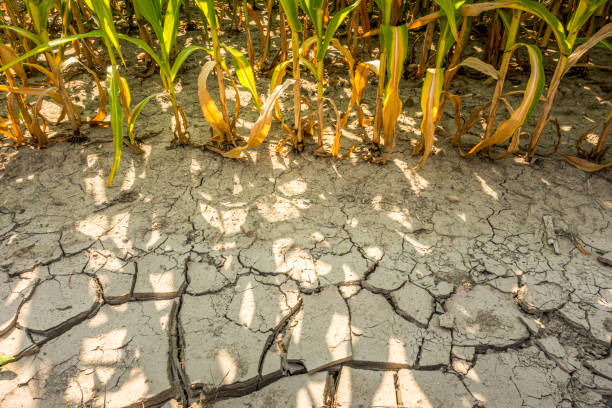
However, the duration between sowing and harvesting becomes shorter.
This shortening of the cycle will adversely affect the productivity of crops because senescence will occur sooner than later.
For Instance, the durations in order to harvest corn could short between one and four weeks.
Effect of CO2 on Crops
An increase in the concentration of carbon dioxide affects plants in a variety of ways.
This decreases the water loss in plants as a result of stomal closing. It limits the vaporization of water reaching the stem of the plants.
Moreover, today the concentration of CO2 is five times higher and it thus shut down the plants.
An increase in global temperatures causes an increase in the evaporation rate and evaporation levels. As a result, it leads to storms in some areas. while in another drying of lands.
These areas are likely to get more precipitation and flood risks to increase while nearby areas will face less precipitation and the risk for droughts increases.
This water stress affects the development of plants and their quality in a variety of ways.
At first, drought can cause poor germination and impaired seeding development in plants.
Moreover, it negatively impacts the yield of crops, As a result, there is a decrease in photosynthetic rate and changes in leaf development.
Drought conditions lead to stunted growth in such areas with results in a decrease in the yield of crops and their growth.
Effect on Quality of Crops
Global Warming impacts the grains and forage quality emerges. it can alter the adequacy ratios for specific macronutrients, carbohydrates, and proteins.
For instance, in rice, the amylose content of the grain increases due to an increase in CO2 concentrations.
However, the concentration of zinc and iron lowers.
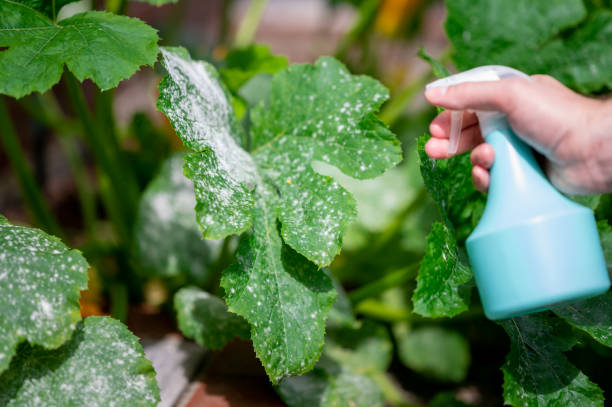
Moreover, the protein content of grain decreases due to an increase in temperature and CO2.
Studies show that an increase in CO2 negatively impacts the concentration of micronutrients in crops and non-crop plants which in turn affects humans negatively.
Because of water scarcity and availability of water to crops in warmer countries they struggle to survive as they suffer from dehydration, as well as other agricultural demands.
Erosion and Fertility
The warmer atmospheric temperatures since the past decades lead to a more vigorous hydrological cycle, including more extreme rainfall events.
As a result, soil erosion and soil degradation occur, as a result, fertility of the soil decreases.
An increase in soil erosion in agricultural landscapes results in loss f up to 22% of soil carbon in 50 years.
Due to extremes of climate, the increase in precipitation increases the risk of erosion.
However, the increase in temperature will induce greater production of minerals it will however lessen the soil organic matter content.
Moreover, the atmospheric CO2 concentration tends to increase.
ENSO Effects on Agriculture
Researchers suggest that ENSO is likely to affect the monsoon patterns more intensely in the future as global warming is affecting the oceans as well.
Crops that lie on the equatorial belt or under the Tropical Walker circulation like rice, are more likely to be affected by varying monsoon patterns.
Moreover, the techniques of schedule planting and harvesting that farmers based on weather patterns will be less effective.
Areas such as Indonesia, Where the main crop is is of rice, will be more vulnerable to an increased intensity of ENSO Effects.
Researchers also suggest due to prolong and delayed monsoon patterns will cause a hungry season.
It will consequently delay planting, harvesting will be late and drier in countries resulting in less potential yields.
Mitigation and Adaptation
Developed countries are taking the following measures keeping in view the increasing Global Warming and its effects.
Some of these are as follows:
- Breeding more resilient crop varieties and diversification of crops
- Improving agroforestry species
- Using improved irrigation practices
- Increasing forest cover and agroforestry
- Using emergency water and harvesting techniques like contour trenching

For Developing countries, where agricultural productivity remains low, the direct effects of climate change are expected to be very harsh.
Building better soils through practices.
Such as planting cover crips and deep-rooted perennials eventually increases the soil’s capacity to soak up heavy rainfall and hold water for dry periods.
By making farms stronger by redesigning them as diverse agroecosystems.
Therefore incorporating trees and native perennials, reducing dependence on fertilizers and pesticides, and reintegrating crops and livestock.
Moreover by developing crop varieties and farm practices to help farmers adapt to evolving climate and global realities.
Conclusion
We need to take measures as soon as possible to reduce the source of the problem as far as we can. This means bringing down net emissions of heat-trapping gases down to zero and doing it as soon as possible.
In recent years, climate change adaptation is being explored by farmers in many ways.
For example, in Pakistan and Brazil farmers have adapted the climate change variability by adjustment of planting tine and optimization of plant populations.
More research and study needs to be conducted, devising new strategies to tackle the problem of increasing Global Warming and how to control it.





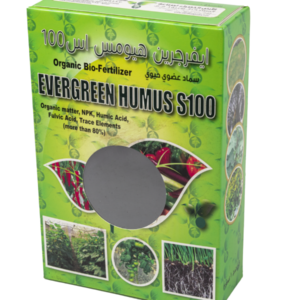
Pingback: Effects of Acid Rain on Agriculture and Vegetation – Al Ard Alkhadra – Home
Pingback: Plastic Waste in Household Items and Their Replacements – Al Ard Alkhadra – Home
Pingback: Amazing Ways to Save Water in Your Garden - Al Ard Alkhadra - Home
Pingback: Carbon Negative Farming - Al Ardh Alkhadra - Home